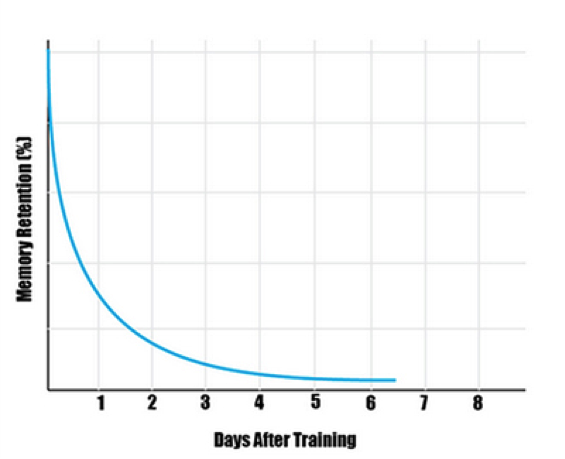This is a CAD learning article from SolidProfessor, famous for their free 30 SOLIDWORKS tips in 30 days learning series.
Avoiding the Forgetting Curve when Learning CAD: 3 Simple Steps
How much do you really forget?
Believe it or not, forgetting is actually an advantage. Think of it this way, if the brain retained every bit of information and memory, it would be impossible to act. The human brain forgets information in order to make room for more relevant information as new information is introduced. While this may sound like a good thing, the problem is that we don’t have much control over the information that our brain chooses to maintain or forget.
Many studies have found that only about 50% of the information presented in training is retained. It gets even worse over the course of a day-long training with a mere 70% of new information being forgotten within the first 24 hours. Over the course of a week-long training, about 90% of the information learned in a session is forgotten by attendees.

The rate of forgetting can be impacted by a number of factors, such as the material’s difficulty and physiological factors like stress and sleep. However, the rate of forgetting across all individuals doesn’t really differ–no one is exempt from forgetting.
Despite this, many companies and industry professionals have failed to change behaviors to combat the forgetting curve. Traditional CAD training has consisted of long classroom sessions that cover dense material and takes place on an annual basis. Unfortunately, with companies spending roughly $60M annually, and most of that information being forgotten, this makes for an expensive effort with little return on investment.
So how can you avoid this training gap? Here are 3 easy steps.
- Space out your learning.
Ongoing learning and just-in-time learning materials allow you to quickly search for answers to your questions and/or review concepts and functions that you use less frequently. You can watch a short video and get back to work immediately.
- Depend on your ability to quickly relearn.
Although the rate at which we forget information seems daunting, relearning information also happens quickly. In fact, relearning information is easier and takes less time than the initial learning of information. And, it takes longer to forget information the more you relearn it. Make sure you have a resource available when you need to quickly relearn a concept or function.
- Create milestones to track progress.
Guided learning via milestones allows you to track your progress and relearn. Checkpoints throughout learning helps remind your brain which information to make room for to focus on learning or relearning. Make sure your ongoing learning tool has built in assessments so you can track your progress and train your brain to remember the most important material.
This guest article about the “forgetting curve” is from the CAD learning experts at SolidProfessor. 3DEngr visitors can start learning with a free SolidProfessor membership today.
